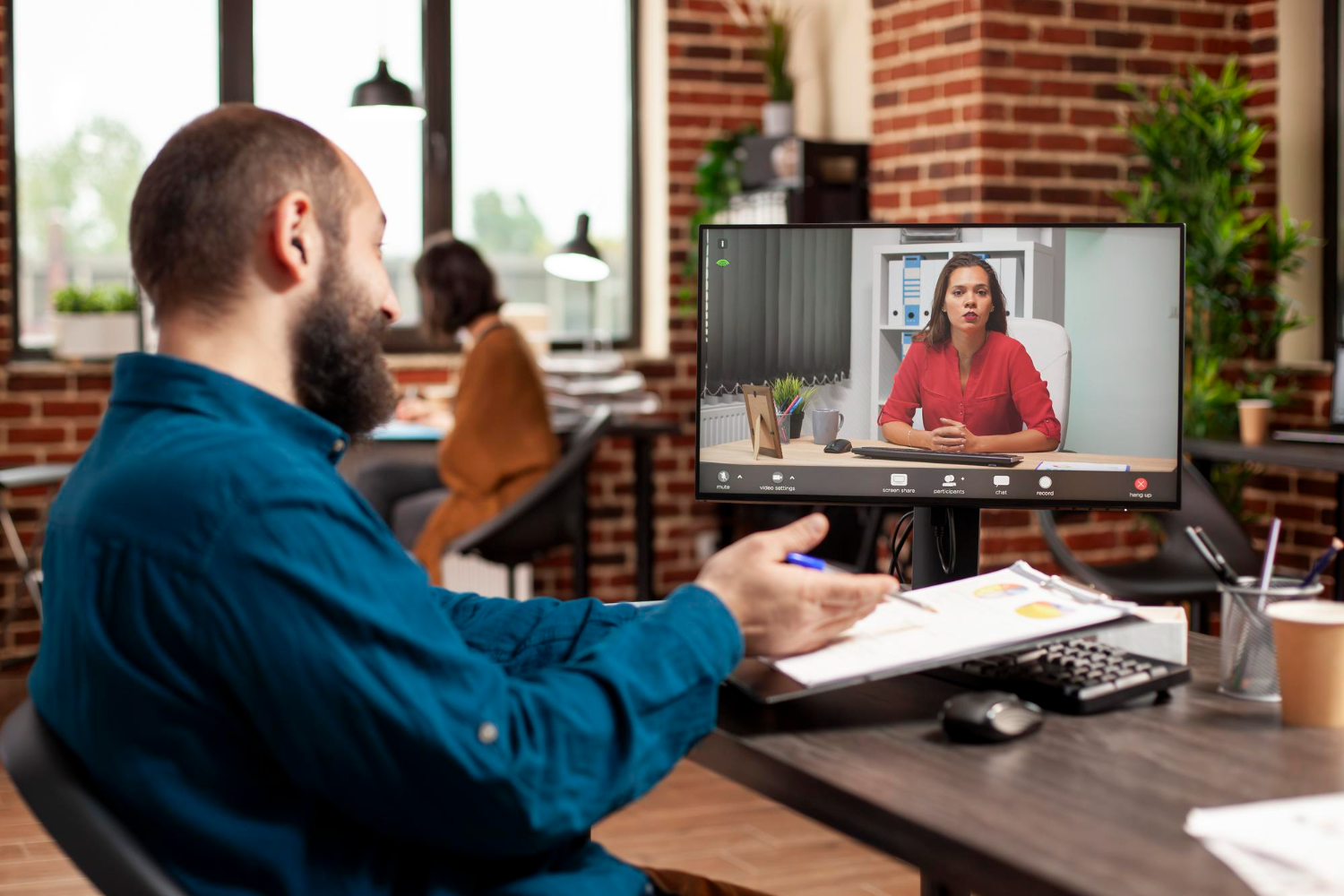Introduction
Webinars and video conferences have changed how people meet and share ideas. These tools let us talk in real time, no matter where we are, as long as we have an internet connection.
A webinar is great for teaching or showing something to a big group. A video conference is better for group talks where everyone takes part. Both work well on mobile devices, so people can join while on the move.
The global webinars and virtual events market was valued at $1.57 billion in 2020 and is expected to nearly triple to $4.44 billion by 2025, growing at a compound annual growth rate of 23.1%, underscoring the rapid adoption of these remote communication tools (Business Wire, 2021).
These tools are now used for online events, team updates, and training sessions. This article will explain the main differences between them, show when to use each one, and how advanced tech like Computer Vision, Generative AI, GPU acceleration, and IoT edge computing make them even better.
Read more: Virtual vs. Verbal Communication: How and Why
What is a Webinar?

A webinar is a live online session where one or a few people present to many. You might create a webinar to teach something, share news, or run a demo. People who join the webinar usually watch, ask questions, or take part in polls. In fact, 95% of marketers incorporate webinars into their marketing strategies, with 38% considering them critical for digital communication and lead-nurturing efforts (Needle, 2021).
Live webinars often include screen sharing, Q&A sessions, and interactive features. After the session, a webinar recording is shared so others can watch later. To attend, people often sign up on registration pages or landing pages using their email address.
Webinar software supports live streaming to social media, helping reach large audiences. It’s made to handle many webinar attendees at once, even on mobile devices.
New tools like Generative AI help answer questions during the webinar. Computer Vision improves video quality, and GPU acceleration ensures the event runs smoothly with good video. IoT edge computing helps stream the session well, even on slow networks.
Read more: Remote Event Hosting with Video Conferencing
What is Video Conferencing?

Video conferencing is used when people need to talk and work together in real time. It’s good for team meetings, check-ins, or planning sessions where everyone can speak and be heard.
People use conferencing software to see and hear each other clearly. High-quality audio and video require a stable internet connection. Users can join from a desktop app, a mobile phone, or straight from their web browsers. Some systems also let people join by phone.
Video conferencing is meant for small groups where everyone joins in. It allows screen sharing and other tools to help teams work together better.
Behind the scenes, GPU acceleration makes sure sound and video stay clear. IoT edge computing helps adjust video for different network speeds. Computer Vision can remove or blur backgrounds, and Generative AI can create meeting notes or summaries after the call.
Key Differences: Webinar vs Video Conference
Though they seem similar, webinars and video conferencing serve different needs.
Interactivity is one key difference. A webinar is usually led by a speaker or presenter, with the audience mainly watching. Some may join in during Q&A sessions, but most stay muted. In contrast, a video conference is a two-way chat. Everyone can speak, share, and take part equally. Supporting their effectiveness, 73% of B2B professionals report that webinars generate higher quality leads compared to other marketing formats, making them ideal for large-scale marketing and training events (Mitchell, 2024).
Audience size also matters. Webinars are made for large audiences, often with hundreds or even thousands of webinar attendees. You often need to sign up using an email address on registration pages or landing pages. Video conferencing, however, is used by smaller groups, like teams or project partners.
When it comes to tools and features, webinars offer things like live streaming, sign-up forms, and recordings. Webinar features are built to help manage big events. Video conferencing focuses more on real-time talk and tools like screen sharing.
Both options can be joined on mobile devices or through web browsers, making access simple from phones or laptops.
Read more: Video Quality Decoded: Comparing 720p and 1080p
Choosing the Right Solution
When picking between a webinar and a video conference, think about your goals.
If you’re running training, a product launch, or a public talk, it makes sense to schedule a webinar. You’ll likely have many webinar attendees, and you might want a webinar recording for those who miss it. These events are often linked to social media to reach more people.
On the other hand, video conferencing is a better choice for a team catch-up or planning session. It allows open discussion, sharing, and group decisions.
Most platforms offer free trials, so you can try both before picking. No matter which you choose, a steady internet connection is key. You’ll also want high-quality video and sound to keep people engaged.
Both tools work well on mobile devices, laptops, and other setups, but choose based on the number attending and how much you want them to participate.
How Advanced Technology Enhances Webinars & Video Conferencing
Modern tech is making both webinars and video conferences smoother, smarter, and more useful.
Computer Vision helps improve how people look on camera. It can blur backgrounds, fix lighting, or even add effects in real time. This works on both desktop apps and mobile devices, helping users look their best.
Generative AI can run smart Q&A sessions, write replies, or create short notes after the session. This saves time and helps keep things clear.
GPU acceleration boosts audio and video quality. It reduces delays and helps keep sound and picture sharp, even in busy screen-sharing sessions or when the internet is slow.
IoT edge computing helps with webinar recording and live video. It adjusts the amount of data sent based on the device and connection, which means better streaming on weaker networks or smaller devices.
Thanks to these tech tools, webinars and video conferencing offer smoother, higher-quality, and more flexible ways to meet online.
Read more: Why Video Conferencing Security Is Non-Negotiable
Conclusion
Webinars and video conferences both help us meet online, but they do different jobs. Use a webinar when you’re speaking to many. Choose a video conference when your team members need to talk and share ideas.
With help from tech like Computer Vision, Generative AI, GPU acceleration, and IoT edge computing, both tools now work better across mobile phones, laptops, and other devices.
Whether you’re hosting live webinars, running online events, or just checking in with the team, picking the right tool saves time and keeps people engaged.
References
-
Business Wire. (2021, October 22). Growth Opportunities in the Global Webinars and Virtual Events Market - Forecast to 2025. Business Wire
-
Freepik. (n.d.). DC Studio
-
Mitchell, A. (2024, February 13). Top Webinar Statistics: Trends and Best Practices You Need. Nandbox Blog
-
Needle, F. (2021, December 14). 22 Stats that Make a Case for Using Webinars in Your Marketing Strategy. Hubspot
